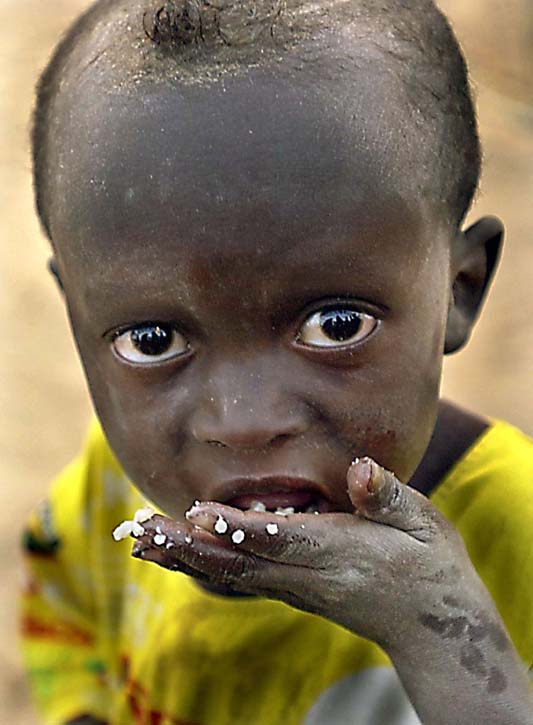|
|

|

|
|
|
|
Category: World Understanding Award
Winner
"Somalia in transition"
|
|
|
Judges' Special Recognition
"Despite similarities to reality"
|
|
|
Finalist
"Sala Negra. Daily violence in Central America"
|
|
|
Finalist
"Between Life and War: The Struggles of Afghan Women"
|
|
|
Finalist
"Living on a Dollar a Day: The Lives and Faces of the World's Poor"
|
|
|
|
|

|
Finalist
1
2
3
4
5
6
7
8
9
10
11
12
13
14
15
16
17
18
19
20
21
22
23
24
25
26
27
28
29
30
31
32
33
34
35
36
37
38
39
40
"Living on a Dollar a Day: The Lives and Faces of the World's Poor"
Living On A Dollar A Day: The Lives And Faces Of The World’s Poor:
Mohamed Ag Ahmedou, 2, suffers from malnutrition and eats only a few grains of rice after a full day of work making coal alongside his mother in the small Bela town of Lere in Mali, Africa on March 26, 2004. "Those that don't work, don't eat," proclaimed the village chief as I made the image. This image haunted me for years and was the catalyst for a long-term project titled Living On A Dollar A Day: The Lives And Faces Of The World's Poor.
Worldwide, approximately one out of six people live on a dollar a day and about 1.2 billion live on less than a dollar a day. It’s an abstract statistic for those who don’t feel its implications on a day-to-day basis.
The project “Living on a Dollar a Day” intimately shows us faces and introduces us to individuals on four continents who live in extreme poverty. I have documented the poor whose lives are consumed by health problems that are treatable with modern medicine, who work hard in hazardous conditions for little pay, and who build homes on borrowed land because, like all human beings, they have to live somewhere. “Living on a Dollar a Day” translates stark statistics into stories that create compassion and, hopefully, move us to act and make a difference.
The United Nations Millennium Development Goals to eradicate extreme poverty are up for review in 2015 and this project is a poignant call to action for governments, civil society organizations and the private sector to set a better course of action. There have been improvements, but not enough to eradicate extreme hunger, disease, lack of adequate shelter, water, education, environmental sustainability, healthcare, and gender equality.
While the reasons for poverty may vary across geographic regions and political circumstance, the results are much the same. Extreme poverty robs people of options in life, and the cycle is nearly impossible t
|
|
|



